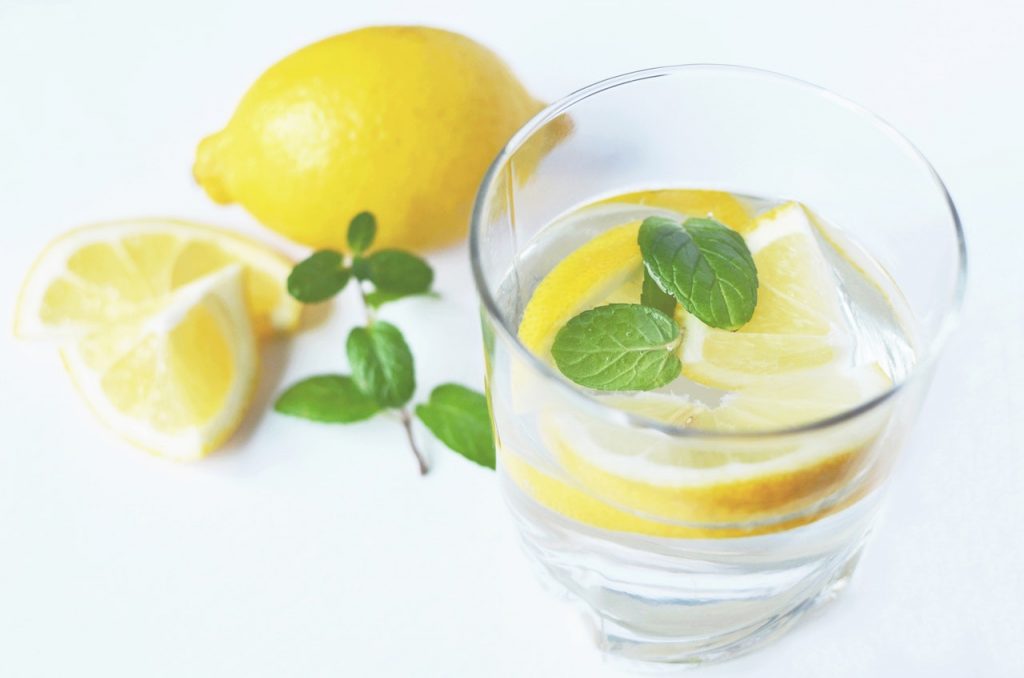Seniors are at a higher risk of dehydration because of a reduced sense of thirst and often also due to side effects from various pharmaceuticals. Dehydration worsens constipation, increases the risk of bladder and kidney infections, thickens mucus in lungs, aggravates asthma and other lung conditions, and reduces both mental and physical performance. It’s to be taken seriously.

Aim for 2-3 l of liquids per day
There’s no way around it – drinking a lot is important as you get older. Try to get 2-3 l of liquids per day, less in winter or when you eat a lot of fresh fruits, veggies, and soups and more in summer when you sweat more often. It’s best to stick to tap water, mineral water, herbal teas, and soups as your main liquids. Here are a few tips to help you kick-start your drinking.
- Leave written reminders to drink around the house.
- Set a timer for every 2 hours during the day reminding you to drink.
- If your mobility is reduced, prepare larger water or tea containers within arm’s reach.
- Monitor your urine colour and if it gets too dark of a yellow, increase your water intake. Just keep in mind that some pharmaceuticals and B-vitamins can darken the colour of your urine.
How about alcohol?

Even though a lot of people say that a glass of wine a day is healthy, the research doesn’t exactly agree with that. The minor benefits of drinking alcohol are statistically overshadowed by the potential risks. Most experts suggest that if you don’t drink already, you shouldn’t start. While the results are somewhat OK for moderate alcohol consumption, excessive consumption is very clearly bad. It’s linked to a host of health problems.
The goal is moderation
Each country has its own recommendations as to what moderation is. They are stated in grams of alcohol per day, so it’s worth knowing that a 500 ml beer commonly has about 16 g of alcohol, 200 ml glass of wine has 7-18 g, and a 5 ml shot of 40 % hard alcohol has 16 g. Countries with the strictest limits such as Estonia, Finland, Germany, Netherlands, Slovenia, and Croatia recommend women drink less than 10 g of alcohol a day and men less than 20 g. Poland and Catalunya are the most lenient with a limit of 20 g for women and 40 g for men. As you can see, moderation ranges from a small beer to two and a half shots. Most countries also recommend going one or more days a week without any alcohol.

This is how to cut back
As seniors get more leisure time, the opportunities for alcohol consumption increase too. Many also use alcohol as a coping mechanism for chronic pain, loneliness, or anxiety. This combination of effects makes it really easy to drink more than moderately, regardless of the country you live in. Here are a few tips that should help you cut back.
- Get in the habit of ordering non-alcoholic beverages in restaurants. Try sparkling water or vegetable juices.
- Spend more leisure time in nature, walking, preferably with friends, family, or a pet. It has been shown to reduce anxiety and promote feelings of wellbeing.
- If drinking is a part of your evening sleep ritual, try replacing it. Sauna before bed works wonders. But you can also try picking up meditation, reading fiction, or anything that you enjoy doing that doesn’t involve alcohol.
- Find friends that will take this challenge of reducing alcohol consumption with you. It always works best if you’re not doing it alone. If this is not an option, try joining a support group or counselling.








